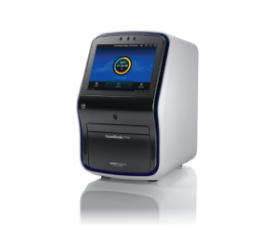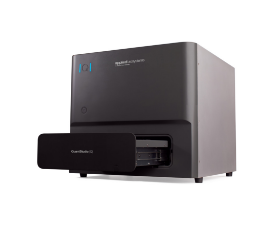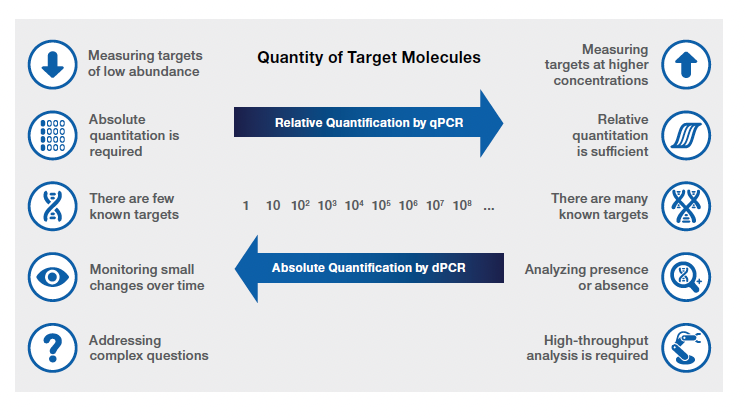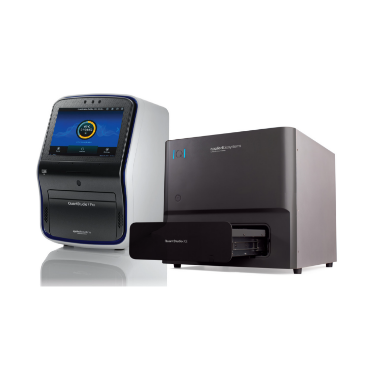Comparing Real-Time PCR and Digital PCR Technologies
Whether you are a veteran in the industry or have just received a grant for a new study, you are always evaluating your options to make sure you are using the solutions that can help you answer your important questions faster and easier.
Each lab has specific needs informing which genetic analysis technology should be used. Both real-time or quantitative PCR (qPCR) and digital PCR (dPCR) can be used to quantify nucleic acids in a sample. This is performed by amplifying a target nucleic acid sequence with a DNA polymerase enzyme. In order to decide which solution fits your project best, it’s important to understand the kinds of answers each application can achieve.
qPCR – Real-Time PCR
Since its development in the mid-1990s, qPCR has been a powerful and sensitive gene analysis technique used for a broad range of applications. qPCR measures PCR amplification against a reference as it occurs. It’s unlike traditional PCR—which provides results after the reaction is complete and making it impossible to determine the starting concentration of nucleic acid. qPCR is well suited for performing quantitation of gene expression, pathogen detection, SNP genotyping, copy number variation (CNV) analysis, miRNA analysis, and viral quantitation.
With Applied Biosystems™ real-time PCR platforms, you get true value with excellent performance, reliability, and world-class support. The Applied Biosystems™ QuantStudio™ family of instruments enables you to obtain the results you need, connect and collaborate with colleagues, and achieve your research goals.
dPCR – Digital PCR

qPCR: Applied Biosystems QuantStudio 7 Pro Real-Time PCR System
dPCR is a newer approach to nucleic acid detection and quantification that estimates absolute numbers of molecules using statistical methods. This is achieved by single-molecule amplification of a target across a large number of PCR replicates. dPCR is well suited for detecting rare alleles, measuring CNV, measuring viral titer, quantifying next-generation sequencing libraries, and detecting rare targets from environmental samples such as wastewater.
The Applied Biosystems™ QuantStudio™ Absolute Q™ Digital PCR System is a plate-based dPCR platform that helps enable all the necessary steps for dPCR to be conducted on a single instrument: compartmentalizing, thermal cycling, and data acquisition. Our dPCR workflows help improve ease of use, minimize hands-on steps, and maximize consistency, using the same qPCR workflow as QuantStudio real-time PCR systems.

qPCR: Applied Biosystems QuantStudio 7 Pro Real-Time PCR System
Even with the differences between them, qPCR and dPCR are complementary technologies—both can answer the question, but the best method depends on details like sample size, data requirements, and if the researcher needs relative quantification or absolute quantification. When trying to decide which technology is best for you, here are a few things to consider:
Digital PCR vs. Real-Time PCR
| Digital PCR | Real-Time PCR | |
|---|---|---|
| Overview | Measures the fraction of negative microreactions to determine the absolute number of copies. If you’re looking for quantitative results, the fraction of negative microreactions is fit to a Poisson statistical algorithm. | Measures PCR amplification as it occurs in a bulk reaction mix. If you’re looking for quantitative results, the quantity of the PCR product is directly proportional to the amount of template nucleic acid (standard curve). |
| Applications | • Quantification of viral load and standards • Quantification of NGS libraries • Rare-allele detection • Wastewater pathogen detection • Liquid biopsy • Quantification of adeno-associated viral vectors • Multiplex detection of multiple targets on a single molecule | • Quantitation of gene expression • Microarray verification • Quality control and assay validation • Pathogen detection • Single-nucleotide polymorphism (SNP) genotyping • Copy number variation • MicroRNA analysis • Viral quantitation • siRNA/RNAi experiments |
| Advantages | • No need to rely on references or standards • Desired precision can be achieved by increasing the total number of PCR replicates • More tolerant to some PCR inhibitors • Capable of analyzing complex mixtures • Provides a linear response to the number of copies present to allow small-fold changes to be detected | • Increased dynamic range of detection • No post-PCR processing • Detection is capable down to a two-fold change • Collects data in the exponential phase of PCR • An increase in reporter fluorescent signal is directly proportional to the number of amplicons generated • The cleaved probe provides a permanent record of amplification of an amplicon |
Are dPCR and qPCR complementary technologies?

Learn more about Applied Biosystems real-time PCR and digital PCR solutions at fishersci.com/quantstudio.



